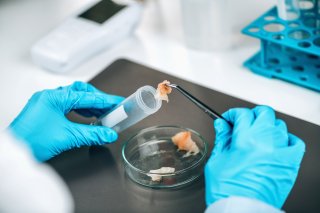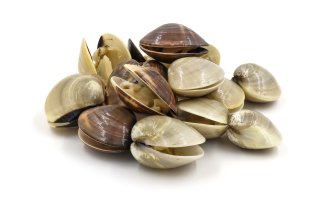What the EPA Does to Protect You From Contaminated Fish and Shellfish
The U.S. Environmental Protection Agency conducts and publishes research and develops guidance to assist states, territories and Tribes in issuing local fish advisories.
On this page:
- Studying Levels of Contamination
- Assisting with Advisories
- Working with Other Federal Agencies to Inform the Public
- Reducing Contaminants in the Environment

Studying Levels of Contamination
The EPA works internally and with partners to conduct a variety of studies that measure concentrations of contaminants in fish.
Assisting with Advisories
The EPA provides guidance and support to states, territories and Tribes for issuing fish consumption advisories when contaminant levels in fish or water bodies are unsafe.
Working with Other Federal Agencies to Inform the Public
The EPA collaborates with other federal agencies, as well as states and Tribes, to inform people about the recommended level of consumption for fish caught in local waters. The goal is to provide up-to-date information to officials responsible for issuing fish consumption advisories and safe eating guidelines to protect public health.
Addressing Shellfish Contamination

The EPA is part of the Interstate Shellfish Sanitation Conference (ISSC), which was formed to foster shellfish sanitation through the cooperation of state and federal control agencies, the shellfish industry, and the academic community.
The National Shellfish Sanitation Program (NSSP) is the federal/state cooperative program recognized by the ISSC for the sanitary control of shellfish produced and sold for human consumption. The program exercises sanitary control over all phases of growing, harvesting, shucking, packing, and distribution of fresh and fresh-frozen uncooked oysters, clams, mussels and scallops.
Some health departments test shellfish harvested within their jurisdictions to monitor toxin levels and assess the risk for contamination. Depending on the results of such testing, recreational and commercial shellfish harvesting may be prohibited locally during periods of risk.
State and federal regulatory agencies also monitor reported cases of marine toxin poisoning and health departments investigate possible outbreaks and devise control measures.
National Joint EPA-FDA Fish Advice
The EPA and the U. S. Food and Drug Administration (FDA) jointly issue and update advice on eating fish and shellfish. This advice is for females who might become pregnant, are pregnant, or are breastfeeding as well as parents and caregivers who are feeding children, but anyone can follow the advice. It helps people make informed choices about the types of fish that are nutritious and safe to eat.
The advice features a chart that makes it easy to choose dozens of healthy and safe options and includes information about the nutritional value of fish. A set of frequently asked questions and answers provides more information on how to use the chart and additional tips for eating fish. Additionally, this advice supports the 2020-2025 edition of Dietary Guidelines for Americans, which reflects current science on nutrition to improve public health.
Reducing Contaminants in the Environment
The EPA works to reduce contaminants in the environment to ensure the habitat health of fish populations and other aquatic wildlife. The issues that concern human health are integrally related to ecosystem health. The EPA is working to reduce contaminants such as pesticides, chemicals and toxics, waste and excess nutrients.
